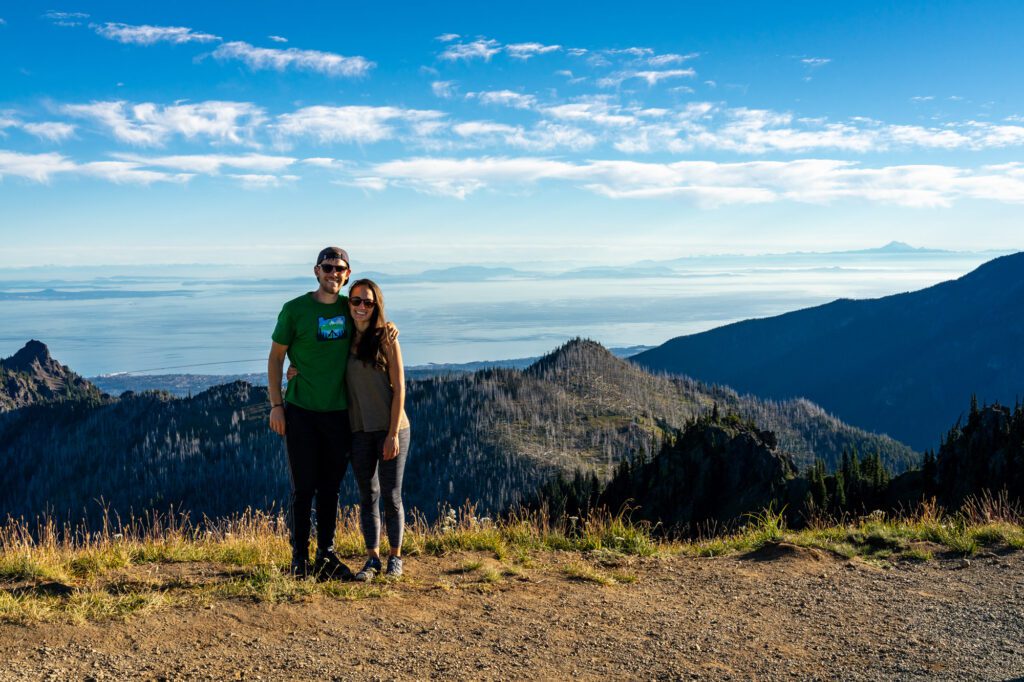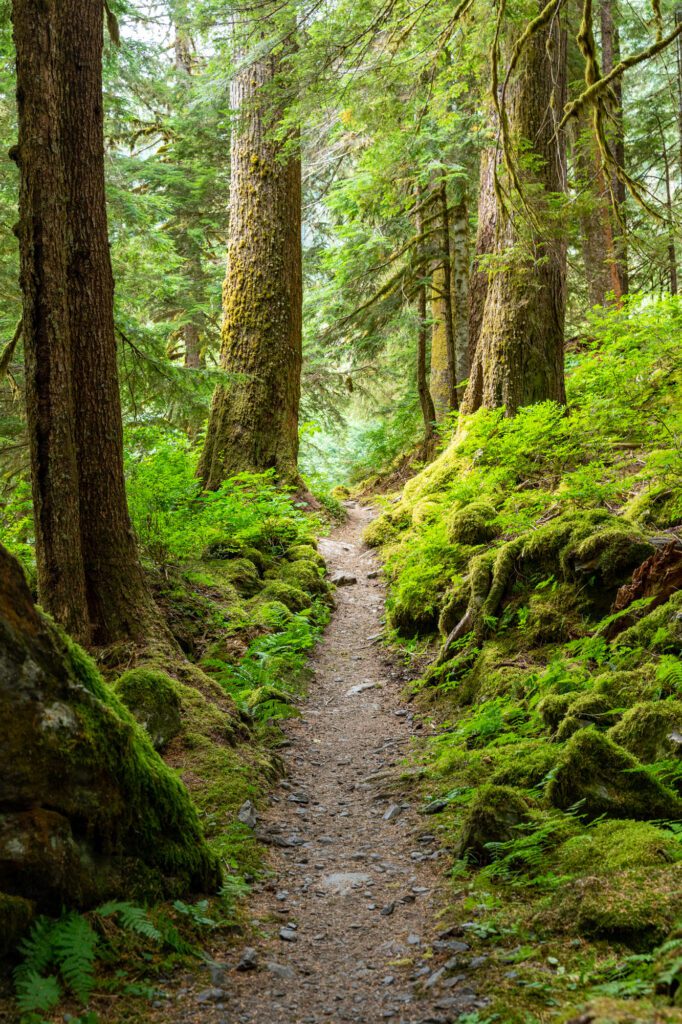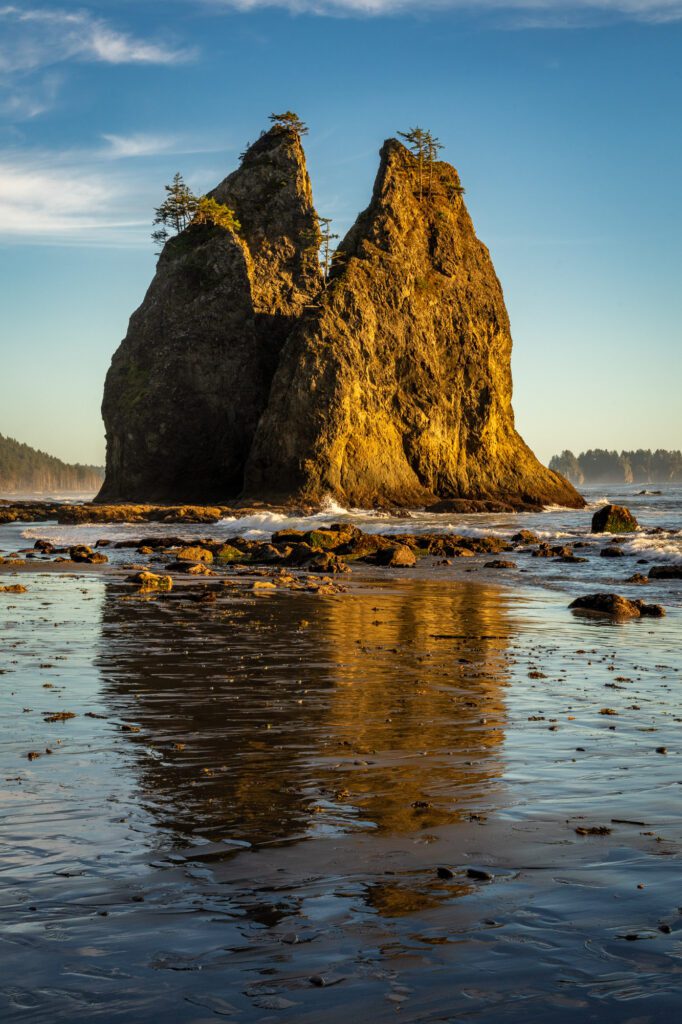Getting to Olympic National Park: Closest Airports + Routes
Tucked away at the northwest corner of the contiguous United States on the Olympic Peninsula in Washington State, you’ll find what might be the most diverse national park in the entire country. From its rugged rocky beaches to the rare coastal temperate rainforests and high alpine landscapes, you’ll find a staggering diversity of ecosystems within the boundaries of Olympic National Park.
We love Olympic, and think it packs a great one-two punch with nearby Mount Rainier National Park (and a few days in Seattle) as a great first trip to Washington State (or the Pacific Northwest).
However, its location out on the Olympic Peninsula isn’t exactly convenient. At best, it’s a three hour drive from the nearest city (and that’s without traffic).
Fear not. We’ve been to Olympic multiple times – including coming from Seattle and Portland – and we have thoughts on the best way to reach Washington’s biggest national park.
In this guide, we’re going to go through everything you need to know when it comes to getting to Olympic National Park (particularly if you’re coming from out of town). We’ll start with the best airport to fly into, talk about the best route from the airport to the park, and more.
By the end, you should be armed with all of the information you need about getting to the park.
Sound good to you? Let’s get into it.



Disclaimer: Some of the links in this post, like hotel links, are affiliate links, meaning at no additional cost to you, we make a little bit of money if you click through and book. That being said, we would never recommend something to you that we don’t stand behind 100%.
How to Get to Olympic National Park: The Best Airports and Routes
We’re going to start with what airport to fly into if you’re coming from outside of the Pacific Northwest, and then talk about getting from the airport or the city to the park (including our perspective on the best ferry routes to take).
The Closest Airports to Olympic National Park
If you’re coming from somewhere outside of the Pacific Northwest, you basically have two options when it comes to airports near Olympic National Park: Seattle-Tacoma International Airport (SEA) and Portland International Airport (PDX).
Seattle-Tacoma International Airport – colloquially known as “SeaTac” – is the best airport in terms of access to Olympic National Park and selection of flights from around the country/world.
If you’re coming from out of the region, that’s where we’d fly into. It’s about 30-40 minutes south of the city (depending on traffic), and will put you about two and a half or three hours from Olympic National Park (we’ll talk more about getting to the park from SeaTac below).
PDX, Portland’s main airport, is our home airport (we live in Portland), and we strongly believe it’s the best airport in the country in terms of experience from security to boarding the plane.
However, there’s no getting around the fact that it is absolutely worse in just about every aspect for this particular need (getting to Olympic).
It’s further from the park (roughly four hours to both Forks and Port Angeles, two main hubs for visiting the park), it has fewer flight options, it has fewer rental car options, and there’s no beautiful ferry ride to take.
The only reason to fly into Portland International Airport (aside from shorter security lines and better food and drink options) is if you’re doing a broader Pacific Northwest Road Trip and want to include places like Portland or the Columbia River Gorge in your itinerary.
Otherwise, we’d fly into Seattle.
Getting from Seattle to Olympic National Park
When it comes to getting from Seattle to the park, the big obstacle you need to cross is the Puget Sound, which separates the city of Seattle from the Olympic Peninsula.
You essentially have two options for crossing the Sound: driving around, or taking one of a few different Washington State Ferry routes to get you over to the Peninsula.
We strongly recommend the ferry (cars are allowed) in at least one direction because it is a magical experience on a clear summer day, when you have the Olympic Range on one side, and the Seattle skyline and towering peak of Mount Rainier on the other as you cross the Puget Sound.
Here’s the view from the Bainbridge Island ferry:
Of the ferry options available, we think the Bainbridge Island Ferry – which leaves from the waterfront in downtown Seattle – is probably the best option in terms of convenience and capacity.
It takes you across to Bainbridge Island, where you’ll do some driving through the woods to meet up with Highway 101 after crossing the Hood Canal Bridge, which will take you to Port Angeles and the northeastern edge of the park.
The ferry crossing will take you about 35 minutes, and it’s going to cost you $17.50 (includes the driver) for the car, plus the walk-on fare for everyone else in the car ($9.85 per adult, and $4.90 for seniors, kids under 18 are free).
The fees are here if you want to take a look. Schedules are here – they come roughly every 60-90 minutes, and you’ll want to show up 20-30 minutes early because they do fill up, particularly on summer weekends.
The second best ferry option would be the Fauntleroy-Southworth Ferry, which leaves from West Seattle and takes a short hop across the Sound to Southworth, where you’ll have a short drive to meet Highway 101.
This one is fine – particularly if you’re coming from SeaTac, but drops you in a slightly less convenient location, and the ferry ride is far less spectacular than the Bainbridge ferry.
A distant third option is the Edmonds-Kingston Ferry, which leaves from north of the city and takes you across to Kingston, which is a bit north of Bainbridge Island.
The reason we don’t like this one is that, if you’re coming from Seattle or SeaTac, it means you have to drive through the city, which can be a nightmare due to traffic during basically all business hours.
The alternative to taking one of the ferries is to drive around through Tacoma, cross the Tacoma Narrows Bridge, and head north along the Hood Canal.
Eventually, you’ll connect with Highway 101, which runs from the northeast side of the park alllll the way down the coast to the southwest edge of the park, and even down to California.
It takes roughly the same amount of time if you’re coming from SeaTac (slightly longer if you’re coming from Seattle), but we view the ferry ride as part of the adventure, which is why we recommend it in one direction.
But what about if you’re coming from SeaTac?
As we mentioned before, SeaTac is about 30-40 minutes from Seattle’s city center, which means your options are slightly different if you’re coming from Seattle itself.
The main difference is that the option for driving around becomes slightly shorter since you’re roughly 30 minutes further south to begin with.
However, it could still be worth taking the ferry because traffic heading south to Tacoma can be BRUTAL at peak hours (particularly 3-7pm, roughly).
Getting to Olympic National Park from Portland
Despite being in Washington State, Olympic National Park makes for a nice weekend getaway from Portland.
If you’re coming from Portland, you’re going to be closer to the south end of the park.
The easiest way to get there is to hop on I-5 north out of Portland and cut over to US-101 at Olympia (via US-12), which will take you around the south end of the park (near Kalaloch Beach).
From Portland to Forks, it’s a five hour drive. From Portland to Port Angeles, it’s four hours or so.
A note if you’re coming from Portland: The best way to do this itinerary from Portland is to make it a big loop that encompasses Kalaloch and the Pacific Coast, Lake Crescent, and Hurricane Ridge along Highway 101 before returning to Portland. You can do it in either direction, it depends on your particular dates/accommodation options and whether you want a slightly longer drive at the beginning or end of the trip.
Planning to visit Olympic National Park? We’ve got more detailed travel guides to help you explore Olympic National Park and make the most of your time in the northwest corner of Washington State.
- How to Plan an Amazing Olympic National Park Itinerary
- Where to Stay in Olympic National Park (For First Timers)
- The Best Hikes in Olympic National Park
- 17 Unforgettable Things to Do in Olympic National Park
- The Best Time to Visit Olympic National Park: All 4 Seasons (COMING SOON)
